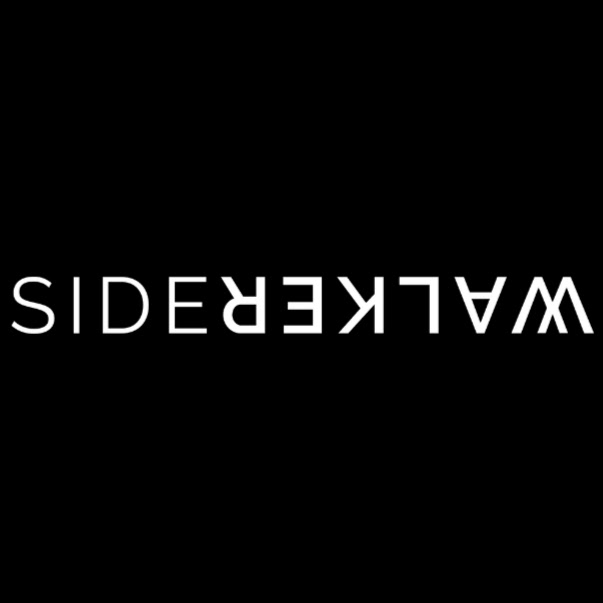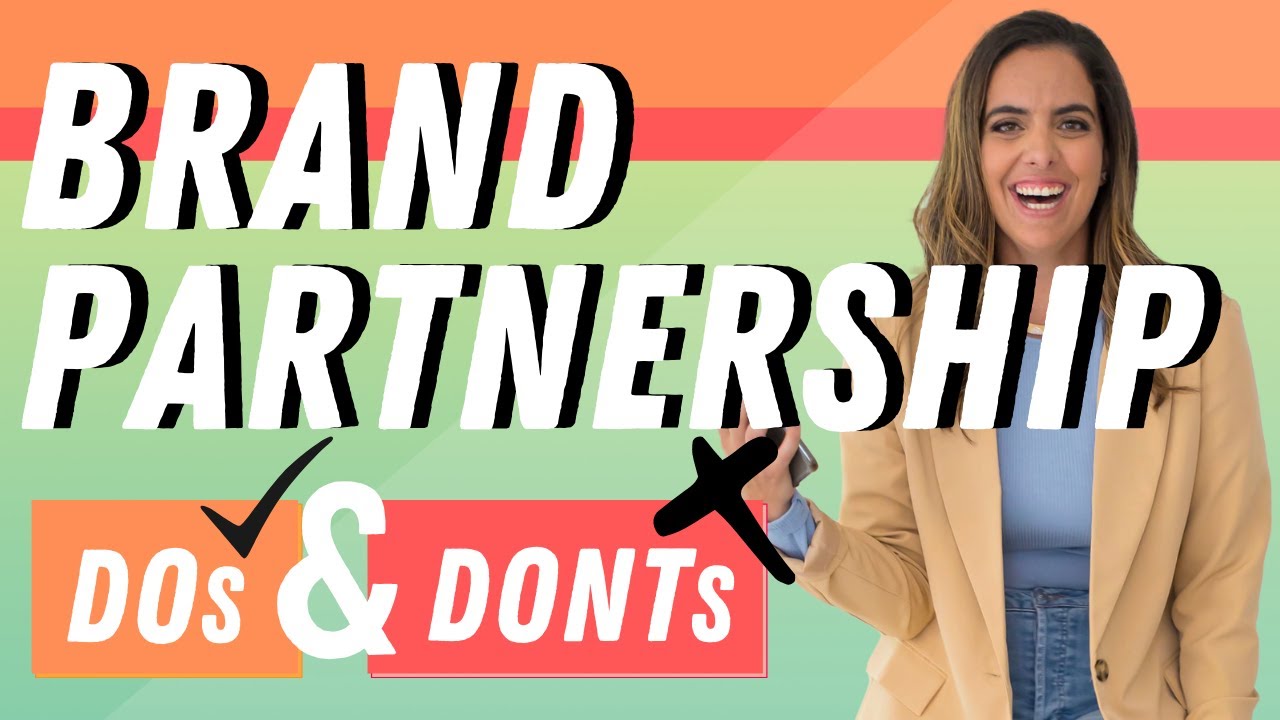 Ronald Aug . March 20
Ronald Aug . March 20
Affiliate Programs And Brand Ambassadors
Effective Brand Ambassador Strategies
- Aligning your brand with the right products and services
- Balancing Sponsored Content with Organic Content in Your Strategy
- Establishing an Authentic Relationship with Your Audience
- Measuring the success of your brand ambassador partnerships

Effective Brand Ambassador Strategies
Aligning your brand with the right products and services
-
80% of video marketers say that YouTube video content has directly led to an increase in sales.
-
70% of YouTube users are more likely to buy from a brand after seeing a positive endorsement from a YouTuber.
-
96% of consumers trust influencers when learning about a product or service.
| Factor | Importance |
|---|---|
| Brand values and reputation | High |
| Target audience overlap | High |
| Product or service quality | High |
| Revenue potential | Medium |
| Creative freedom | Medium |
Do's:
- Research the company and the product/service you'll be endorsing.
- Ensure the brand aligns with your values and content.
- Clearly disclose sponsorships to your audience.
- Be open about the benefits and potential drawbacks of the promoted product/service.
- Maintain creative control over your content.
Don'ts:
- Promote products/services that you don't believe in or haven't tested yourself.
- Sacrifice your reputation for a quick paycheck.
- Prioritize short-term financial gains over long-term trust and authenticity.
- Ignore your audience's feedback regarding the brands you collaborate with.
- Promote too many products/services at the cost of alienating your audience.
Key benefits:
- Increased revenue opportunities
- Enhanced credibility and trust with your audience
- Stronger brand identity
It's important to align your brand with products and services that resonate with your audience and represent your values. Successfully selecting the right brand collaborations can lead to increased revenue, enhanced credibility, and a stronger brand identity. For more insights and resources on being a YouTube creator, check out our guide on how to make YouTube videos.
Balancing Sponsored Content with Organic Content in Your Strategy
Sponsored Content Overview
Sponsored content refers to videos and campaigns that promote a brand, product, or service through a partnership between a Youtuber and a company. It can include affiliate links, endorsements, reviews, or any form of promotion by the creator.
Organic Content Overview
Organic content is content created naturally by the YouTuber without a specific promotion or collaboration with a brand or company. It is the genuine expression and creative work of the creator, reflecting their personal interests, skills, and passions.
Balancing the Strategy
To ensure your YouTube channel maintains its authenticity and credibility while benefiting from sponsored content, follow these strategies:
Do's
-
Maintain a healthy ratio: Aim to have more organic videos than sponsored content. Studies show that ___% of an ideal content mix should be organic. [Insert source or reference]
-
Clear and honest disclosures: Be transparent about sponsorships and collaborations in your videos, aligning with YouTube sponsorship rules and regulations. This includes disclosing any affiliate links in the video description.
Figure 3. A clear sponsorship disclosure in a video description.
-
Strategic scheduling: Space out sponsored content strategically among organic content. An organic-to-sponsored video scheduling plan could be to post one sponsored video for every three organic videos.
-
Stay relevant: Ensure sponsored content is relevant and useful to your audience to maintain credibility and authority in your niche.
-
Engage your audience: Engage viewers with organic content through Q&As, behind-the-scenes videos, and content based on audience feedback.
Don'ts
-
Don't overload with sponsored content: Flooding a channel with sponsored content can harm viewer trust and discourage future organic growth.
-
Don't sacrifice quality or authenticity: Avoid promoting low-quality products or services that conflict with your personal values, ethics, or overall brand image.
-
Don't neglect your audience: Remember to address your audience's needs and desires with relevant and useful organic content alongside sponsored content. This builds trust and loyalty.
Case Study - [YouTuber Name]
Case Study - [YouTuber Name]
Becoming a successful YouTube brand ambassador requires a careful balance of sponsored and organic content while maintaining viewer trust and engagement. For further resources, explore the best tools for YouTube creators to enhance your content creation and performance.
Effective Brand Ambassador Strategies
Establishing an Authentic Relationship with Your Audience
- Authenticity boosts viewer engagement: 80% of consumers say it's important for influencers to be authentic in their content.1
- Trustworthiness is a top 3 factor in influencer marketing effectiveness, according to 42% of marketers.2
Do's
-
Be true to your personality and opinions: Being genuine with your opinions and emotions helps you connect better with your audience and allows them to trust you more.
-
Share your personal experiences: Sharing stories and experiences helps your audience understand you better and connect with you on a deeper level.
-
Reply to comments and engage with your audience: Actively engaging with your audience strengthens the community around your channel and helps build trust.
-
Be transparent about sponsored content: Disclosing sponsorships and partnerships is not only legally required but helps maintain your credibility.
Don'ts
-
Don't promote products you don't believe in: Promoting products just for money can negatively impact your audience's trust in you.
-
Don't abandon your core content: Even as a brand ambassador, continue creating content that resonates with your audience and maintains your channel's identity.
-
Don't ignore negative feedback: Address criticism constructively and use it as a learning experience to improve your content.
- Philip DeFranco is known for discussing controversial topics while remaining transparent. He clearly discloses brand partnerships and addresses any negative feedback.
Tips
- Offer exclusive content to your loyal audience members through Patreon or YouTube channel memberships (more information).
- Continuously improve your content by staying updated with the latest industry news and resources.
By establishing an authentic relationship with your audience, you'll be able to more effectively represent brands and attract potential partnership opportunities.
1 - 80% of consumers say it's important for influencers to be authentic in their content: Stackla 2 - Trustworthiness is a top 3 factor in influencer marketing effectiveness, according to 42% of marketers: Influencer Marketing Hub
Effective Brand Ambassador Strategies
Measuring the success of your brand ambassador partnerships
Statistics and Metrics
Some essential metrics to measure the success of a brand ambassador partnership include:
- Engagement Rate: This includes likes, comments, and shares on the brand ambassador's content related to your brand.
- Conversion Rate: The percentage of viewers who make a purchase or complete a desired action after interacting with the brand ambassador's content.
- Click-Through Rate (CTR): The percentage of users who click on a link embedded in the brand ambassador's content.
- Reach: The number of unique users who have viewed the brand ambassador's content.
- Return on Investment (ROI): The overall value of the partnership based on investment and revenue earned through the ambassador's efforts.
Do:
- Make sure to define clear goals and objectives before starting a partnership.
- Regularly evaluate progress using defined metrics.
- Continuously adjust strategies based on data analysis.
- Communicate with your brand ambassador to ensure synergy and alignment.
- Use visuals, such as tables and charts, to easily track progress and understand results.
Don't:
- Don't expect immediate results. It takes time to build awareness and trust within the brand ambassador's audience.
- Don't rely solely on vanity metrics, such as follower count. Dig deeper into engagement and conversion rates for a more accurate assessment.
- Don't disregard negative feedback. Instead, use it as an opportunity to make improvements.
Visuals
Engagement Rate Chart
Conversion Rate Table
| Month | Conversion Rate |
|---|---|
| 1 | 1.5% |
| 2 | 3.0% |
| 3 | 2.5% |
To further expand your knowledge on YouTube partnerships and collaborations, check out this guide on YouTube collabs and networking.
Managing and Scaling Relationships with Brands and Affiliate Programs
- Communicating effectively with affiliate managers and brand partners
- Tips for Identifying Potential Partners
- Approaching Brands and Affiliate Programs
- Building and Maintaining Relationships
- Tracking Partnership Success
- Best Practices for Staying Compliant
- Monitoring Compliance
- Collaborating with Brands and Affiliate Programs
- Analyzing Metrics and KPIs
- Affiliate Program Tracking
- Assessing Brand Collaborations
- A/B Testing
- Goals and Milestones
- Tools and Resources for Data Analysis
- Basics of affiliate marketing on YouTube
- What are Affiliate Programs?
- Why Affiliate Programs?
- How to Choose the Right Affiliate Program

Managing and Scaling Relationships with Brands and Affiliate Programs
Communicating effectively with affiliate managers and brand partners
Effective communication is crucial for any successful partnership, including collaborations with affiliate managers and brand partners on YouTube. In this section, we will explore various ways to communicate effectively with these stakeholders, ensuring a fruitful and long-lasting partnership.
Statistics on Brand Partnerships and Affiliates
- 65% of the top-performing YouTube influencers have brand partnerships.
- 33% of total YouTube revenue comes from brand and affiliate sponsorships.
- Influencers earn anywhere from $500 to $10,000 or more per video, based on their following and engagement.
Building Trust and Clarity in Communication
-
Set clear expectations: Create a well-defined scope of work, mention key objectives and deliverables to ensure everyone understands their role and responsibilities.
-
Communicate through a preferred channel: Use the affiliate manager or brand partner's preferred method of communication to ensure a smooth exchange of information.
-
Establish a timeline: Provide a timeline for video creation, editing, approval, and publishing to adhere to deadlines and communicate any adjustments needed promptly.
-
Foster trust: Be honest, open to feedback, and transparent with your partners, showing them that you value their input and collaboration.
- Sharing monthly or quarterly performance reports with your brand partner or affiliate manager.
- Collaborating in real-time using project management tools like Trello or Asana.
- Asking for resources and support from brand partners when needed (e.g., promotional materials, data, etc.).
- Regularly updating partners on the progress of your content creation, seeking input or reviewing promotional materials.
Do's
- Maintain professionalism in your communication.
- Be prompt in responding to messages, emails, or calls.
- Listen and respond to feedback constructively.
- Keep your counterparts updated on any changes or challenges you face in the project.
- Express gratitude to your partners for their support.
Don'ts
- Avoid overpromising and underdelivering.
- Don't ignore concerns raised by your partners.
- Don't hesitate to seek clarification if something is unclear.
- Avoid being dishonest or hiding issues in the partnership.
- Don't undermine the partner's expertise or experience.
Monitor and share your performance metrics with your partners using various charts and tables:
- Revenue Growth Chart: Track your affiliate or sponsorship revenue growth over time.
- Traffic Sources Table: Understand where your visitors are coming from and their interaction with the content.
- Conversion Rates: Monitor the effectiveness of your promotional content in driving sales or sign-ups for the partner's product or service.
- Audience Engagement: Analyze audience metrics like watch time, likes, comments, and shares to gauge the effectiveness of the sponsored content.
Navigating the world of YouTube collaborations can be challenging, but with effective communication and managing partnerships, it becomes more straightforward. Be sure to explore other resources like online courses on how to make Youtube videos to continue growing your skills and becoming an expert content creator.
Expanding Partnerships to Boost Revenue and Channel Growth
Expanding your YouTube channel's partnerships can lead to a significant boost in revenue and channel growth. Partnering with brands and joining affiliate programs allows you to diversify your income sources and tap into a larger audience. A well-rounded portfolio of partnerships will enable you to:
- Increase earnings
- Reach a broader, highly engaged audience
- Enhance your content with sponsored products or services
- Create more diverse and high-quality content
Tips for Identifying Potential Partners
To identify potential partners for collaborations, look for brands or products that:
- Align with your channel's niche and target audience
- Offer quality products or services that you can trust
- Have a strong online presence with a large following
- Can offer mutual benefits from a partnership
Consider leveraging tools or resources available for creators like websites for YouTube creators to find relevant partners.
Approaching Brands and Affiliate Programs
When reaching out to potential partners, focus on these best practices:
- Do your research: Understand the brand's target audience, values, and campaign goals.
- Tailor your pitch: Personalize each proposal to address the brand's needs and explain how you can provide value.
- Showcase your work: Share links to your channel or specific videos that demonstrate your content quality and engagement levels.
Building and Maintaining Relationships
Once you establish partnerships, it's important to build and maintain strong relationships with your partners. To foster long-term collaborations:
- Deliver quality content that showcases your partners' products or services
- Provide regular updates and performance metrics
- Communicate openly and respond promptly to any requests or concerns
- Offer solutions to improve campaign performance and ROI
Tracking Partnership Success
To ensure that expanding partnerships leads to revenue and channel growth, track the performance of these collaborations through:
- Engagement Metrics: Analyze the number of likes, comments, and shares on sponsored content.
- Conversion Rates: Monitor affiliate sales, sign-ups, or other actions taken by your audience as a result of your promoted content.
- Revenue Growth: Measure the increase in your overall earnings derived from partners eventually.
- Audience Growth: Observe any changes in subscriber numbers, views, or watch time resulting from your partnership efforts.
By strategically expanding and managing partnerships with brands and affiliate programs, YouTube creators can fuel revenue growth and audience expansion for their channels.
Staying Compliant with YouTube's Terms and Policies
Before getting started, familiarize yourself with the YouTube Partner Program policies, Community Guidelines, and Terms of Service. These documents cover a wide range of topics, including copyright, monetization, and user conduct. They're constantly updated, so it's essential to stay informed.
Best Practices for Staying Compliant
Here are some best practices to adhere to while working with brands and affiliate programs:
1. Disclose relationships and sponsorships: Be upfront and clarify when your content is sponsored or includes affiliate links. Many countries have advertising laws that require disclosure. YouTube also requires it as per their Ad policies.
2. Avoid prohibited products and services: Do not promote products or services that YouTube prohibits. Check their Ad policies for guidelines on restricted content.
3. Respect copyright: Abide by YouTube's copyright rules. Ensure you have the necessary permissions to use copyrighted materials in your content. For more information, refer to the section on understanding and adhering to copyright laws.
4. Follow community guidelines: Ensure your content aligns with YouTube's Community Guidelines, which help maintain a safe and respectful user experience. They cover a range of topics, from harmful content to harassment.
Avoid these common mistakes when working with brands and affiliate programs:
-
Don't promote prohibited content: Some content and products are not allowed on YouTube (e.g., drugs, firearms, or adult content).
-
Don't mislead viewers: Do not use clickbait titles, thumbnails, or descriptions that mislead viewers or promote false claims.
-
Don't engage in spammy practices: Avoid using excessive tags, misleading metadata, or engaging in deceptive commenting.
-
Don't manipulate the YouTube algorithm: Do not engage in practices like artificial view counts, subscriber purchasing, or click farms. This can lead to penalties or channel termination.
Monitoring Compliance
Staying informed and monitoring compliance is an ongoing process. To help keep yourself up to date with YouTube's policies and guidelines, consider signing up for YouTube newsletters, participating in YouTube creator forums, and following YouTube's social media channels.
Additionally, regularly audit your videos and revise any content that may not be compliant with YouTube's policies. This can help prevent demonetization, strikes, or even channel termination.
Collaborating with Brands and Affiliate Programs
As you grow on YouTube and develop relationships with brands and affiliate programs, maintaining compliance with YouTube’s terms and policies becomes even more critical. Ensure that you communicate effectively with your partners to create content that abides by these policies. Additionally, familiarize yourself with best practices for negotiating with brands and understanding sponsorship contracts.
Tracking Progress and Analyzing Data for Improved Performance
Tracking progress and analyzing data are crucial in effectively managing and scaling your relationships with brands and affiliate programs. This section covers essential elements and techniques to help maximize performance and growth in your YouTube career.
Analyzing Metrics and KPIs
Successful content creators must pay attention to YouTube analytics and track key performance indicators (KPIs) to optimize their overall performance. Here are some important KPIs to monitor:
- Views: Total number of video views.
- Retention rate: Average percentage of a video watched by viewers.
- Watch time: Total time spent by viewers watching your videos.
- CTR: Click-through rate, i.e., the percentage of impressions that led to video views.
- Subscribers: Total number of channel subscribers.
- Engagement: Total number of likes, dislikes, comments, and shares.
Affiliate Program Tracking
Make sure to track the performance of your affiliate links and sponsored content. Some common parameters monitored include:
- Affiliate link clicks: Number of clicks on your affiliate links.
- Conversion rate: Percentage of clicks that resulted in a purchase.
- Revenue: Total income generated through affiliate sales.
Use these metrics to assess the effectiveness of your affiliate marketing strategy and make data-driven decisions for optimization.
Assessing Brand Collaborations
When working with brands, it's essential to track the performance of sponsored content. Some key metrics include:
- Reach: Total number of views for sponsored videos.
- Engagement: Likes, dislikes, comments, and shares on sponsored content.
- Sales: Amount of product sales generated through your sponsored content.
A/B Testing
To optimize your content, perform A/B tests with variables such as video thumbnails, titles, descriptions, and tags. By testing different versions, you can identify the combinations that maximally increase your CTR and overall performance.
Goals and Milestones
Set specific goals and milestones to track your progress and success. These may include:
- Subscribers: Aim for specific subscriber counts by certain dates.
- Revenue: Set revenue targets for different monetization strategies (AdSense, affiliate marketing, sponsorships, etc.).
- Collaborations: Establish a goal for forming partnerships with brands or other creators in a given timeframe.
Tools and Resources for Data Analysis
Leverage third-party tools and resources to help you track, analyze, and optimize your YouTube channel's performance. Some popular options include TubeBuddy, VidIQ, and Social Blade.
Remember to stay informed and updated on industry trends and news by following websites for YouTube creators and subscribing to YouTube newsletters.

Basics of affiliate marketing on YouTube
Affiliate marketing is a lucrative strategy that many YouTubers embrace to diversify their income streams. The basics of affiliate marketing on YouTube involve partnering with companies and promoting their products or services for a commission.
- 81% of brands use affiliate marketing to generate sales (Source: Hosting Tribunal).
- 15% of all digital media revenue comes from affiliate marketing (Source: Business Insider).
- YouTube ranks as the 2nd most used social media platform (Source: Datareportal).
- Review channels promoting products and offering affiliate links for purchase.
- Tutorial channels mentioning tools and courses with affiliate links.
Do's
- Choose relevant affiliate programs aligned with your niche.
- Clearly disclose affiliate links according to FTC guidelines.
- Create valuable content that benefits your viewers.
- Use shortened and trackable affiliate links.
- Maintain a good balance between regular and affiliate-related content.
Don'ts
- Avoid using spammy or misleading tactics to promote affiliate links.
- Do not promote low-quality or unrelated products.
- Don't solely depend on affiliate marketing for income; diversify your revenue streams.
| Platform | Commission Rate | Notable Features |
|---|---|---|
| Amazon Associates | 1-10% | Easy to start, vast selection of products |
| ShareASale | Varies by merchant | Over 3,900 merchants, various categories |
| Commission Junction | Varies by merchant | Wide range of products, global reach |
| ClickBank | Up to 75% | Focus on digital products, full product stats |
- Infographics depicting data from the stats section.
-
Benefits of affiliate marketing on YouTube:
- Extra income source.
- Better products and recommendations for viewers.
- Increase credibility as an expert in your niche.
-
Types of affiliate content:
- Product review videos.
- Tutorials and how-to videos with affiliate resources.
- Comparisons and buyer's guide videos.
- Growth in affiliate marketing revenue per year.
- Commission rates breakdown by industry.
To boost your knowledge and success in YouTube affiliate marketing, consider staying up-to-date with resources from websites for YouTube creators and seek advice from professionals in the field.
Differences between affiliates and brand ambassadors
Definitions:
- Affiliates: YouTube creators who promote products and services from a company in exchange for a commission on sales made through their unique referral links or codes.
- Brand Ambassadors: YouTube creators selected by a company to represent and promote the brand through their content, often in exchange for free products, services, or payments. They embody the brand's image and values and have a long-term working relationship with the company.
Requirements:
-
Affiliates:
- Generally open to anyone willing to promote the brand.
- No need for a long-term commitment.
- Usually earn commissions based on performance (sales made through referral links or codes).
-
Brand Ambassadors:
- Selected by the company, often based on the creator's audience and alignment with the brand's values.
- Long-term commitment to the company.
- Receive payments, free products, or services for promoting the brand, independent of performance.
-
Affiliates:
- A tech YouTuber promoting video editing software for YouTube and earning a commission on every sale made through their referral link.
- A fashion YouTuber showcasing clothing items from an online store and earning a commission when viewers purchase the items using their unique discount code.
-
Brand Ambassadors:
- A fitness YouTuber who consistently promotes a specific supplement brand in their videos and participates in the brand's marketing campaigns.
- A beauty YouTuber who regularly features makeup products from a particular brand and acts as its public representative at events, in ads, and on social media.
Dos:
-
Affiliates:
- Be transparent about the affiliate relationship.
- Share authentic and honest opinions about the products or services being promoted.
- Use trackable referral links or unique discount codes when promoting products.
-
Brand Ambassadors:
- Stay consistent with the brand's image and values.
- Engage with your audience and build a community around the brand or products being promoted.
- Help the brand stay on top of industry trends and maintain a strong image in your niche.
Don'ts:
-
Affiliates:
- Don't promote products or services that you don't genuinely believe in.
- Don't use clickbait or misleading content to drive sales.
- Don't oversaturate your content with affiliate promotions, which may lead to audience frustration and a decline in viewer engagement.
-
Brand Ambassadors:
- Don't compromise your authentic voice to fit the brand's image.
- Don't prioritize brand deals over creating genuine content for your audience.
- Don't promote competing brands or products.
Chart: Affiliates vs. Brand Ambassadors
| Affiliates | Brand Ambassadors | |
|---|---|---|
| Commitment | No long-term commitment | Long-term commitment |
| Payments | Commissions based on performance | Fixed payments, free products or services |
| Selection | Open to anyone | Chosen by the company |
| Relationship | Focus on promoting products/services | Represent the brand |
By understanding these differences between YouTube affiliates and brand ambassadors, creators can make informed decisions about partnerships and monetization strategies on the platform. Be sure to also explore our resources on affiliate marketing for YouTube.
Identifying the Right Affiliate Program for Your Channel
In this section, we will discuss the process of identifying the right affiliate program for your YouTube channel.
What are Affiliate Programs?
Affiliate programs are a way for businesses to partner with influencers and content creators to promote their products or services. In return, the content creators receive a commission for each sale or action that results from their promotion. This can be an excellent source of income for YouTubers looking to monetize their channel.
Why Affiliate Programs?
Affiliate marketing can be a more stable and predictable source of income compared to relying solely on YouTube ad revenue. Additionally, affiliate marketing allows creators to promote products and services that they genuinely enjoy, making the sponsored content more authentic and genuinely valuable to their audience.
How to Choose the Right Affiliate Program
To choose the right affiliate program for your YouTube channel, consider the following factors:
-
Relevance: Choose an affiliate program that offers products or services relevant to your channel’s niche and audience. Promoting unrelated products may damage your credibility and alienate your viewers.
-
Commission Rate: Look for programs that offer competitive commission rates. Higher commissions will allow you to earn more revenue for each sale generated through your affiliate links.
-
Payment Terms: Review the payment terms of each affiliate program. Consider factors such as payment frequency and minimum payout threshold before joining.
-
Affiliate Support: A good affiliate program should provide marketing tools, resources, and support to help you succeed. Some even offer online courses and educational resources for better promotion.
-
Program Reputation: Look for affiliate programs with a strong track record and positive reviews from other affiliates. This indicates that the program is reliable and trustworthy.
-
Do conduct thorough research on each affiliate program before joining.
-
Do focus on promoting products and services you genuinely believe in and would recommend to your audience.
-
Don't promote multiple competing products in the same video, as it can confuse your viewers.
-
Don't spam your audience with too many affiliate links or overly promotional content.
-
Amazon Associates
-
Shopify Affiliate Program
-
Bluehost Affiliate Program
-
ShareASale
-
ClickBank
Identifying the right affiliate program involves evaluating the relevancy, commission rate, payment terms, affiliate support, and reputation of potential programs. Ultimately, finding the best fit for your channel will require research and experimentation. But with the right affiliate program in place, you can begin generating valuable income while providing genuine value to your audience.
For more information on other monetization strategies, check out our section on affiliate marketing for youtube.
Looking for Brand Deals or Channel Strategy?
We run a platform for brand deals and an agency, helping creators derive maximum value from their content, while offering brands access to unparalleled, best-in-class research.
For Creators
- Strategic Brand Connections
- Outreach to Old Sponsors
- Platform to Manage Brand Deals
- View-Based Contract Negotiation
- Comprehensive Channel Strategy
- Channel/Thumbnail Optimization
For Brands
- Tools to Shortlist Creators
- Targeted Creator Outreach
- Detailed Sponsorship Reports on Existing Brands
- Platform to Manage Creator Deals
- View-Based Deal Facilitation
For Creators
- Strategic Brand Connections
- Outreach to Old Sponsors
- Platform to Manage Brand Deals
- View-Based Contract Negotiation
- Comprehensive Channel Strategy
- Channel/Thumbnail Optimization
For Brands
- Tools to Shortlist Creators
- Targeted Creator Outreach
- Detailed Sponsorship Reports on Existing Brands
- Platform to Manage Creator Deals
- View-Based Deal Facilitation
Apply to work with us or email [email protected]





Table of Contents
Work with us